Australian Tropical Rainforest Plants - Online edition
Jasminum molle R.Br.
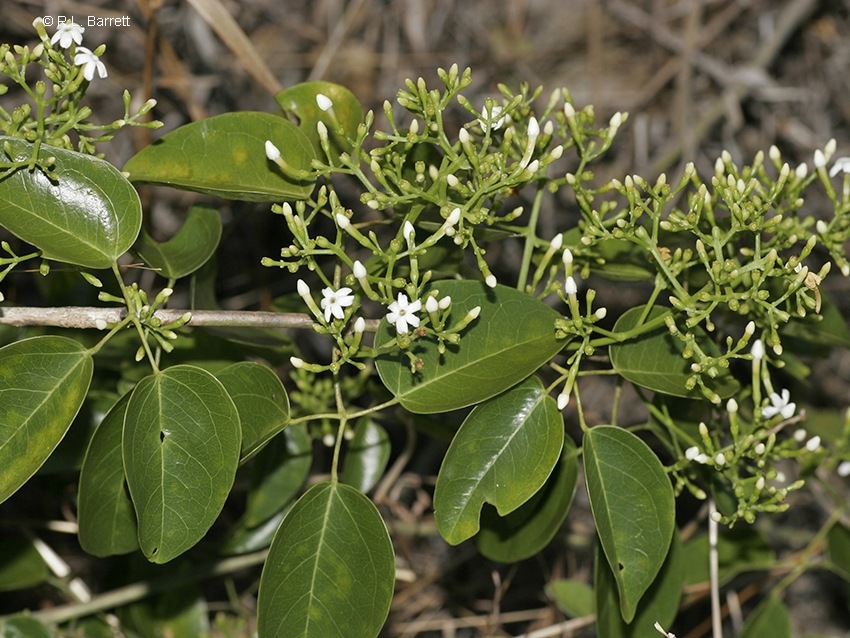


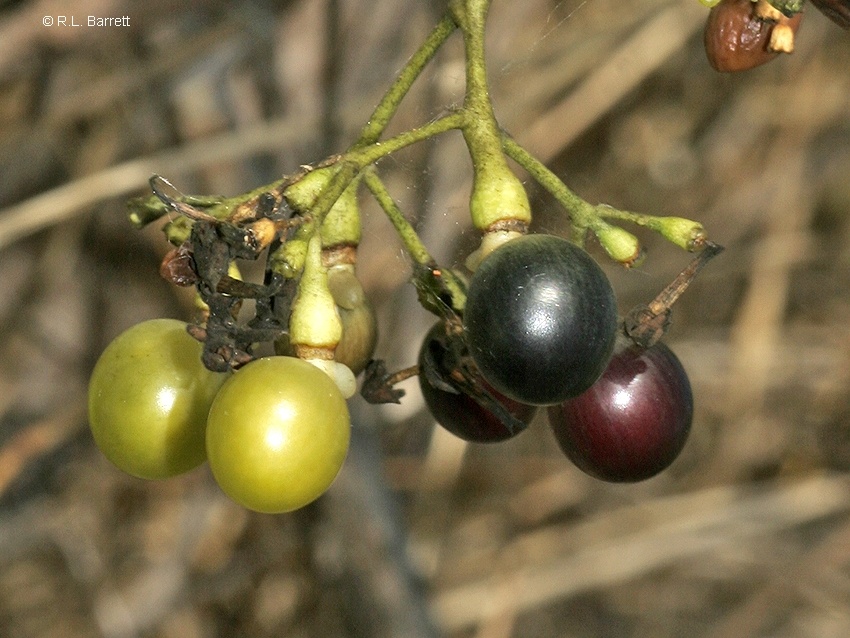
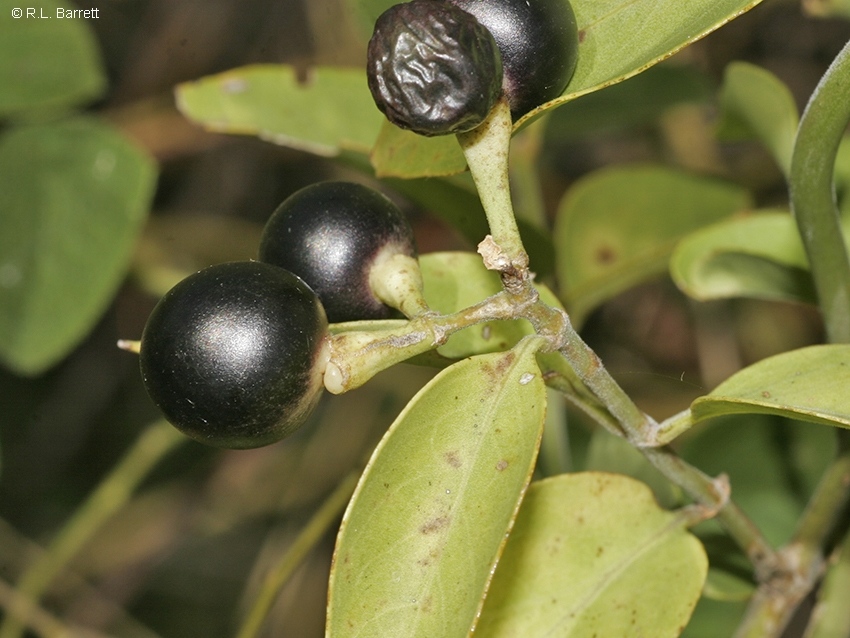
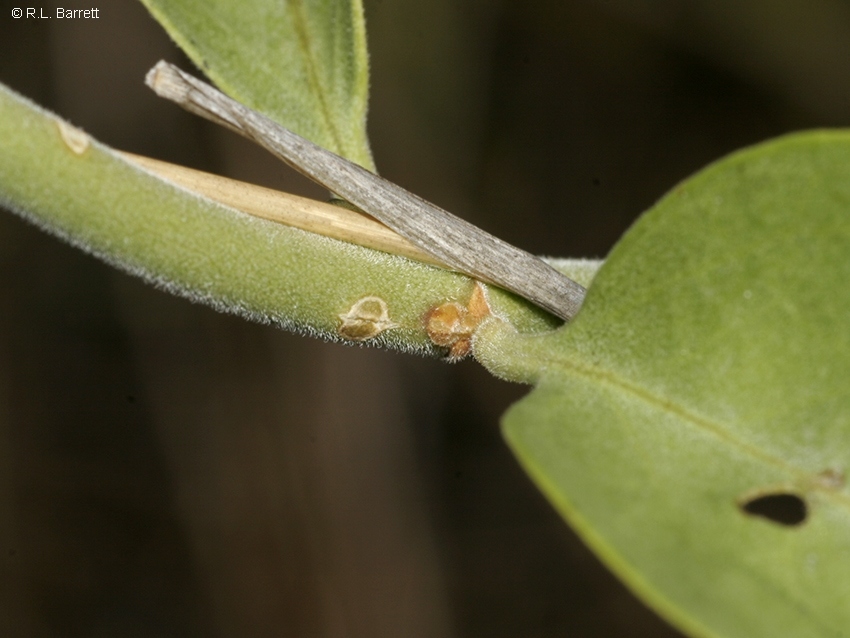
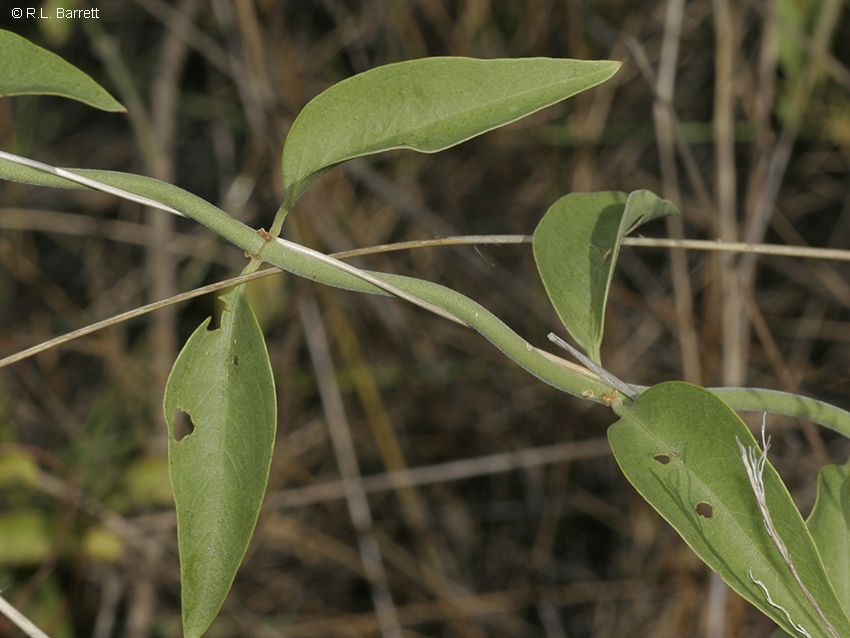
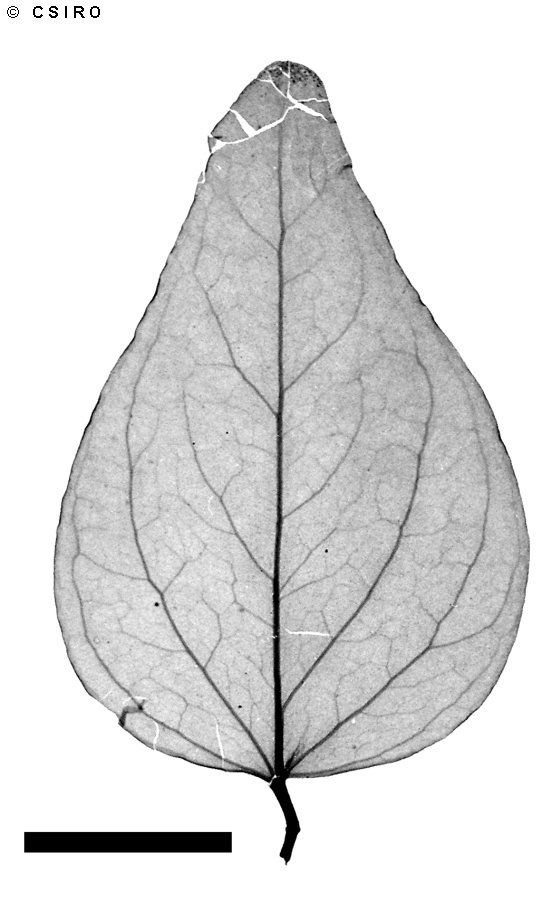

Brown, R. (1810) Prodromus Florae Novae Hollandiae : 521. Type: Northern Australia, R. Brown; holo: BM?.
Jasmine, Native; Native Jasmine; Jasmine, Hairy; Hairy Jasmine
Usually flowers and fruits as a shrub but can grow as a vine.
Flowers strongly perfumed. Calyx lobes four to six, each about 0.2-1.5 mm long, fused to form a tube about 1 mm long. Corolla five or six-lobed, each lobe about 6-10 mm long, corolla tube about 8-16 mm long. Anthers linear, about 3.5 mm long. Style about 4 mm long(?). Stigma linear, about 2 mm long.
Cataphylls about 2-4, produced before the first true leaves. At the tenth leaf stage: leaf blades +/- ovate with an articulation or pulvinus about midway between the leaf base and the stem.
Endemic to Australia, occurs in WA, NT and NEQ (the Gulf of Carpentaria region). Altitudinal range from near sea level to 300 m. Grows in monsoon forest, vine thickets, open eucalypt forest and desert shrubland.





